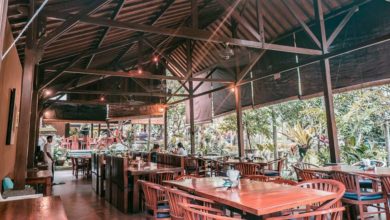
Exploring Bali Local Dialects and Languages
Bali, an island known for its vibrant culture and breathtaking landscapes, is also a linguistic treasure trove where Bali local dialects flourish alongside the official language. From the bustling streets of Ubud to the serene beaches of Uluwatu, the diverse dialects add a unique layer of cultural richness. This linguistic diversity not only highlights the island’s rich heritage but also showcases the harmonious blend of tradition and modernity. As we delve into the world of Bali’s languages, we uncover the essence of its people and their way of life.
Read Also: Bali Culinary Adventure Aesthetic Eats
The heart of Bali’s linguistic diversity
Bali’s linguistic landscape is as intricate and colorful as its famous textiles. The island’s official language, Indonesian, serves as a unifying thread throughout the archipelago. Yet, it is the Balinese language, with its multiple dialects, that truly captures the island’s spirit. Each region boasts its own variant, from the highlands to the coast, telling tales of history and tradition through its unique linguistic twists.
“Bali’s dialects weave a tapestry of culture, reflecting its soul and heritage.”
The diversity extends beyond just dialects; it reflects in the everyday life of the Balinese people. In ceremonies, traditional markets, and even in the casual banter among locals, one can hear the rich tapestry of sounds that make up Bali’s auditory landscape. This variety not only adds to the island’s charm but also plays a crucial role in preserving its cultural identity. It’s a testament to the resilience of the Balinese culture, adapting yet holding firm to its roots amidst the waves of modernity.
Among the most fascinating aspects of Bali’s languages are the levels of speech, which vary according to social status and the relationship between speakers. This complexity adds depth to the Balinese language, making every conversation an exercise in cultural understanding and respect. It’s a system that honors the island’s hierarchical society, ensuring harmony and balance in interpersonal communications.
Read Also: Why is Bali called Bali? History of Bali
Bali’s official language vs local dialects
Indonesia’s national language, Bahasa Indonesia, is the official language across Bali, just as it is throughout the vast archipelago. This unifying language bridges the diverse ethnic groups, enabling communication and fostering unity. Yet, when you step onto the enchanting island of Bali, a symphony of local dialects greets you, each carrying the essence of the island’s rich cultural heritage. These dialects, deeply rooted in Balinese society, serve as a living museum of the island’s history and traditions.
The Balinese language, with its complex system of levels of speech, offers a fascinating contrast to the more straightforward Bahasa Indonesia. While the official language is used in formal education, government, and media, Balinese and its dialects thrive in homes, temples, and villages. This coexistence highlights a harmonious balance between preserving local identity and embracing a national identity. It’s a dance between the modern demands of a unified language and the ancestral call of local dialects.
“Bali balances its linguistic heritage with national unity, enriching both.”
Understanding this linguistic duality is key to appreciating Bali’s cultural complexity. For travelers and linguists alike, the shift from the formal tones of Bahasa Indonesia to the melodic expressions of Balinese dialects offers a rich, immersive experience. It’s a reminder of the island’s ability to blend tradition and modernity, keeping its cultural roots alive while participating in a global conversation.
Read Also: Bali Travel Tips: A Complete Guide to Explore the Island
Understanding Balinese language nuances
Diving deep into the Balinese language reveals a fascinating world of linguistic subtleties that reflect the island’s social structures and cultural values. The language is rich with levels of politeness, intricately tied to the Balinese caste system and social hierarchy. This system, known as ‘Basa Bali’, categorizes speech into low, middle, and high levels, each used depending on the speaker’s relationship and social standing with their listener. It’s a dance of respect and etiquette, played out through language.
“In Bali, language dances with culture, reflecting respect and hierarchy.”
The nuances of the Balinese language extend beyond verbal communication, encompassing a wide range of non-verbal cues and gestures. These subtleties carry as much weight as the spoken word, indicating respect, agreement, or the social status of those involved in the conversation. It’s a reminder that in Bali, how you say something can be as important as what you say. This aspect of communication is a beautiful testament to the island’s deep-rooted cultural and spiritual values.
For those eager to learn Balinese, understanding these nuances is key to truly grasping the essence of the language. It’s not just about learning vocabulary and grammar but immersing oneself in the cultural context that gives life to the language. This journey of learning offers a deeper connection with the Balinese people and their way of life, opening doors to rich, authentic experiences on the island.

Exploring the linguistic landscape of Bali unveils a world where the Bali official language coexists harmoniously with local dialects, each enriching the island’s cultural fabric. This journey through language not only highlights the importance of Bahasa Indonesia in unifying diverse communities but also celebrates the distinctiveness of Balinese dialects and their nuances. The interplay between these languages mirrors Bali’s ability to maintain its cultural identity while embracing modernity. Understanding and appreciating this linguistic diversity offers a deeper insight into the heart and soul of Bali, making every conversation and interaction a unique blend of tradition and contemporary life.





